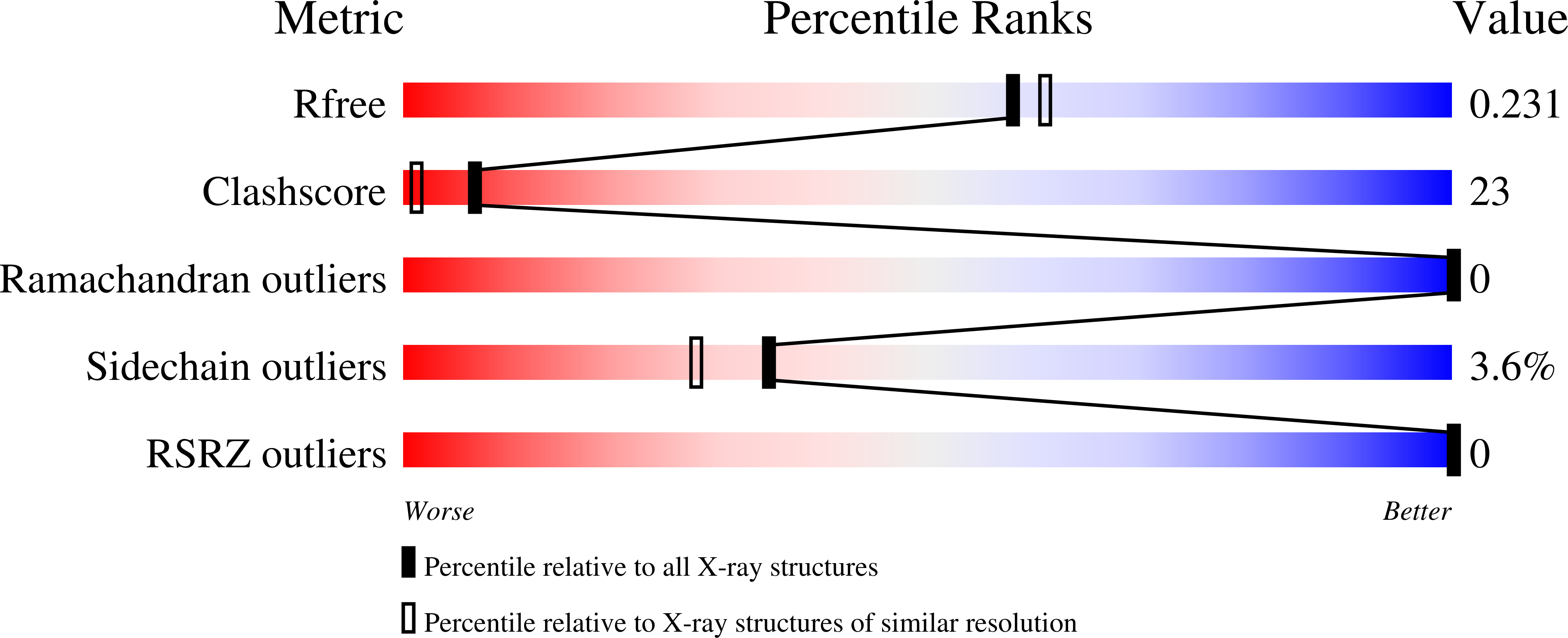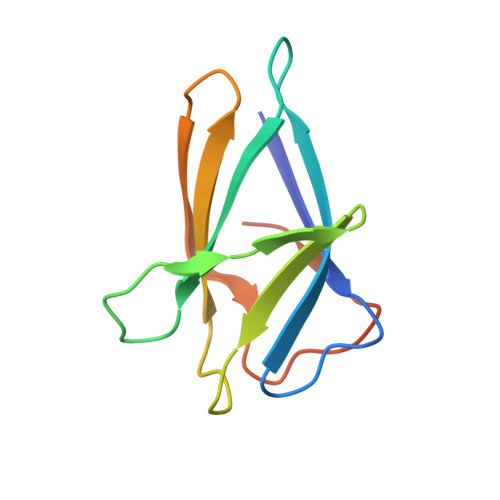High-resolution crystal structure and IgE recognition of the major grass pollen allergen Phl p 3.
Devanaboyina, S.C., Cornelius, C., Lupinek, C., Fauland, K., Dall'Antonia, F., Nandy, A., Hagen, S., Flicker, S., Valenta, R., Keller, W.(2014) Allergy 69: 1617-1628
- PubMed: 25123586
- DOI: https://doi.org/10.1111/all.12511
- Primary Citation of Related Structures:
3FT1, 3FT9 - PubMed Abstract:
Group 2 and 3 grass pollen allergens are major allergens with high allergenic activity and exhibit structural similarity with the C-terminal portion of major group 1 allergens. In this study, we aimed to determine the crystal structure of timothy grass pollen allergen, Phl p 3, and to study its IgE recognition and cross-reactivity with group 2 and group 1 allergens. The three-dimensional structure of Phl p 3 was solved by X-ray crystallography and compared with the structures of group 1 and 2 grass pollen allergens. Cross-reactivity was studied using a human monoclonal antibody which inhibits allergic patients' IgE binding and by IgE inhibition experiments with patients' sera. Conformational Phl p 3 IgE epitopes were predicted with the algorithm SPADE, and Phl p 3 variants containing single point mutations in the predicted IgE binding sites were produced to analyze allergic patients' IgE binding. Phl p 3 is a globular β-sandwich protein showing structural similarity to Phl p 2 and the Phl p 1-C-terminal domain. Phl p 3 showed IgE cross-reactivity with group 2 allergens but not with group 1 allergens. SPADE identified two conformational IgE epitope-containing areas, of which one overlaps with the epitope defined by the monoclonal antibody. The mutation of arginine 68 to alanine completely abolished binding of the blocking antibody. This mutation and a mutation of D13 in the predicted second IgE epitope area also reduced allergic patients' IgE binding. Group 3 and group 2 grass pollen allergens are cross-reactive allergens containing conformational IgE epitopes. They lack relevant IgE cross-reactivity with group 1 allergens and therefore need to be included in diagnostic tests and allergen-specific treatments in addition to group 1 allergens.
Organizational Affiliation:
Institute for Molecular Biosciences, Structural Biology, University of Graz, Graz, Austria.














